Cleveland's Shore-to-Core-to-Shore initiative comprises innovative transportation and redevelopment projects focused on three key areas: the Lakefront (Shore), Downtown (Core), and Riverfront (Shore).
These projects aim to enhance safe access and efficient connections to Cleveland's waterfronts while unlocking economic development opportunities by repurposing vacant and underutilized land to stimulate economic growth and enhance the quality of life for residents.
The City has taken an innovative approach to financing by adopting a tax-increment financing (TIF) district over its downtown. Over 42 years, the TIF District is estimated to generate between $3.3B and $7.5B. The primary goal for the TIF District is to fund the Shore-to-Core-to-Shore public improvements.
Lakefront Masterplan and North Coast Connector
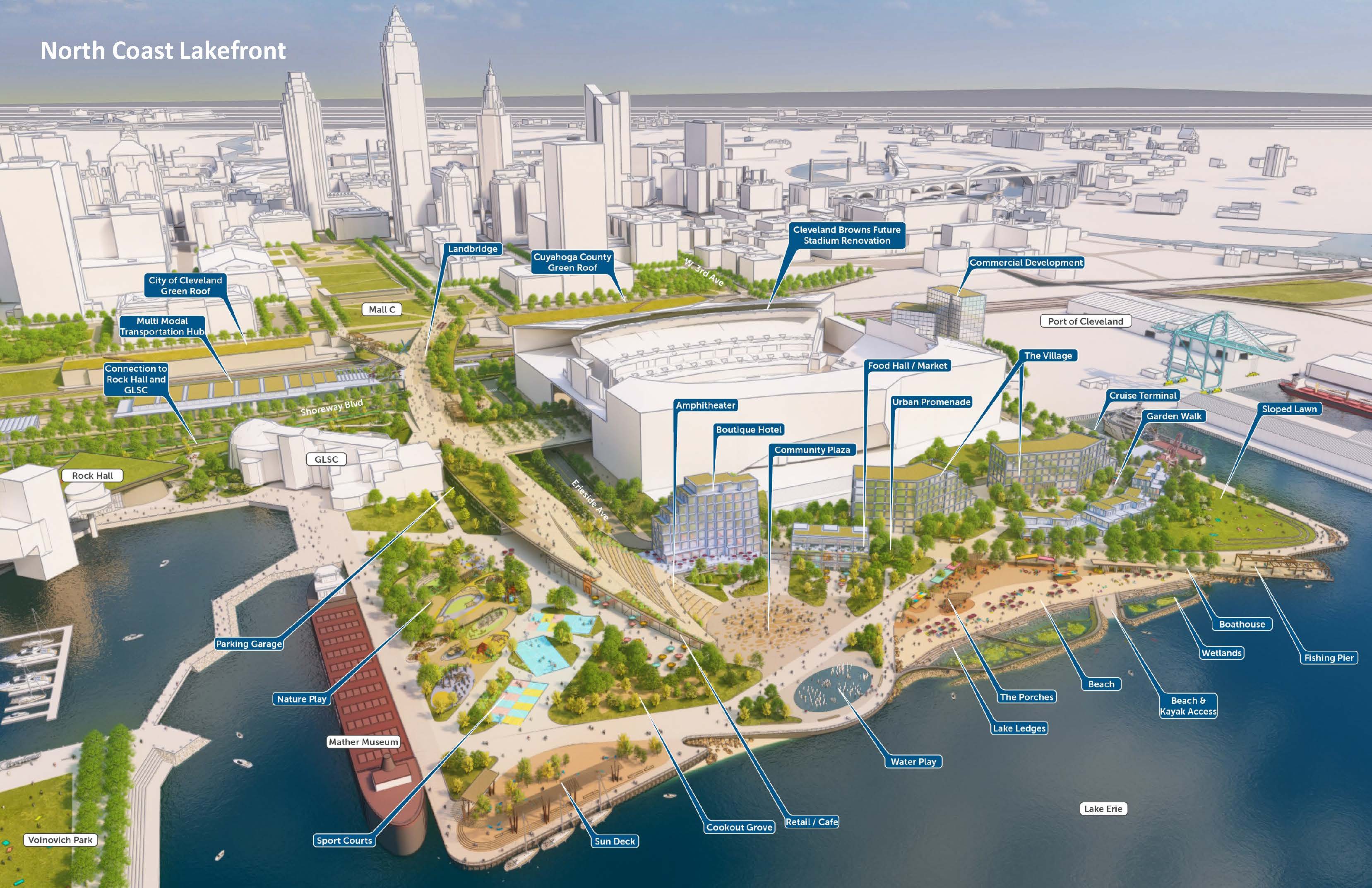
Since 2022, the City of Cleveland and its partners have surveyed more than 5,000 people in order to develop a plan for redeveloping a lakefront area for all Clevelanders. The resulting North Coast Master Plan is the guiding vision for Cleveland’s lakefront transformation, laying the foundation for a more connected, inclusive and vibrant lakefront area. The plan encompasses a host of strategic initiatives aimed at improving access, boosting economic development and promoting environmental stewardship along the shores of Lake Erie.
The North Coast Connector is a proposed land bridge connecting the grassy lawns of Mall C and City Hall to the lakefront. It will span over the railroad tracks and the Shoreway to restore access and repair more than a century-old divide, opening up new land for community gatherings and future economic development.
State Route 2 will be reduced from a limited access freeway to a safer lower-speed local boulevard. The North Coast Connector also integrates a new multi-modal transit facility in its design that will connect the existing Amtrak and light rail tracks and other modes.
The City has led substantial public engagement to reimagine the lakefront to balance public green space and economic development opportunities. Working collaboratively with the North Coast Waterfront Development Corporation to see the project through, the development plan includes 16 acres of dedicated green space, a new multi-modal transportation hub, 1,300 new mixed-income residential units, and 3 million square feet of new office, retail, and entertainment uses.
Latest Update:
Proposed North Coast Connector
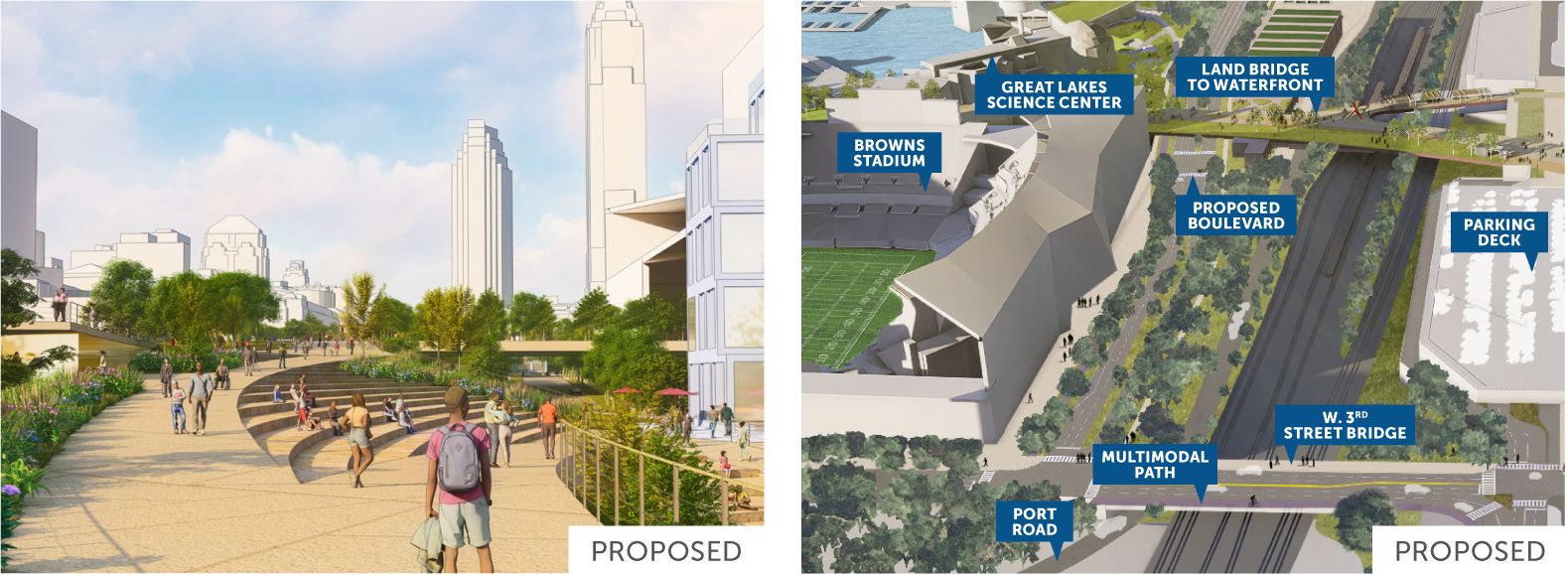
The images above show the proposed North Coast Connector. The land bridge would extend from the grassy area next to Cleveland City Hall to the lakefront, crossing over the railroad tracks and State Route 2 Cleveland Memorial Shoreway.
Converting the Shoreway to a Boulevard
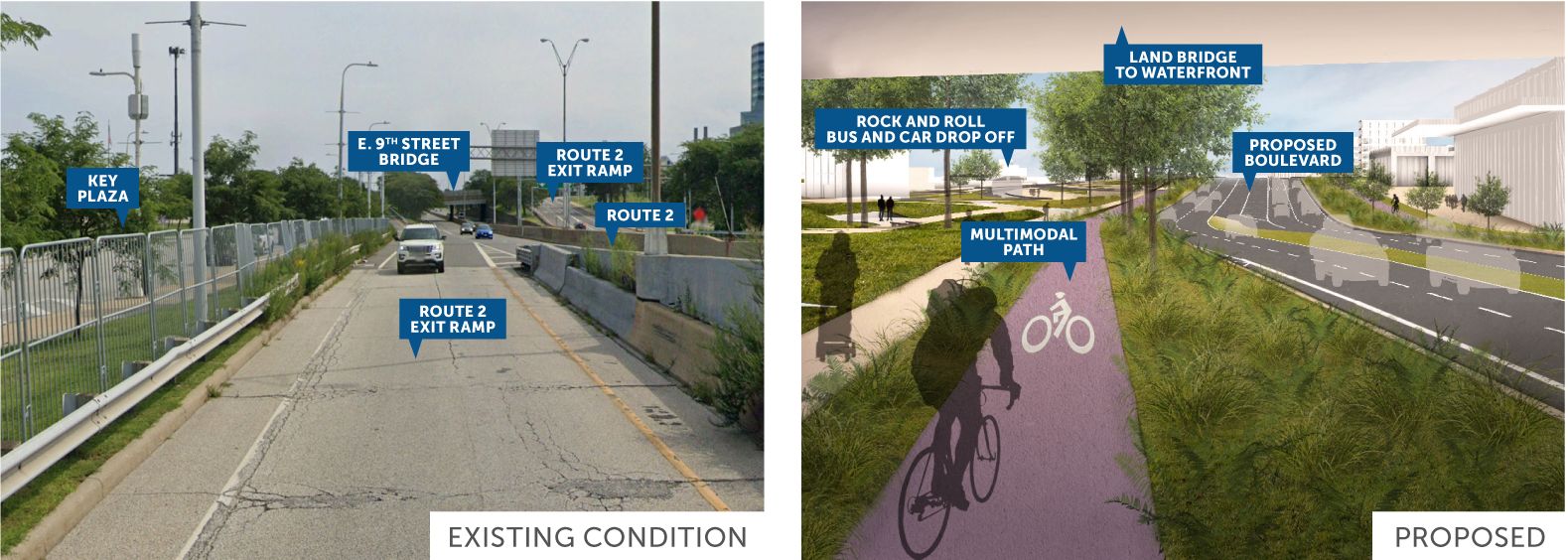
These images show how the Shoreway would be converted from a limited-access highway with a 55-mph speed limit to a 35-mph boulevard with new intersections, sidewalks and a multi-use path. The view shown on the right is under the land bridge, looking east near Great Lakes Science Center.
West 3rd Intersection
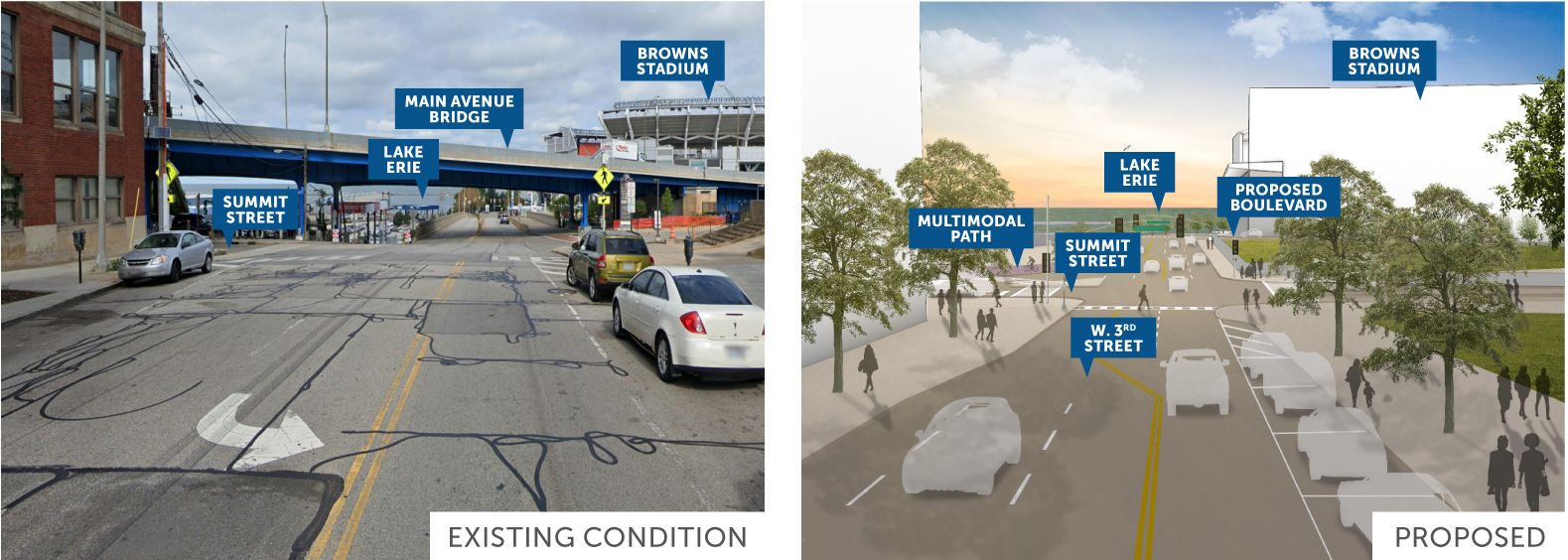
These images show the West 3rd intersection today and what is proposed.
Mayor Justin Bibb and team provided a festive update at Cleveland’s North Coast Lakefront Future Forum on August 5, 2024. View the video here.
Cuyahoga Riverfront
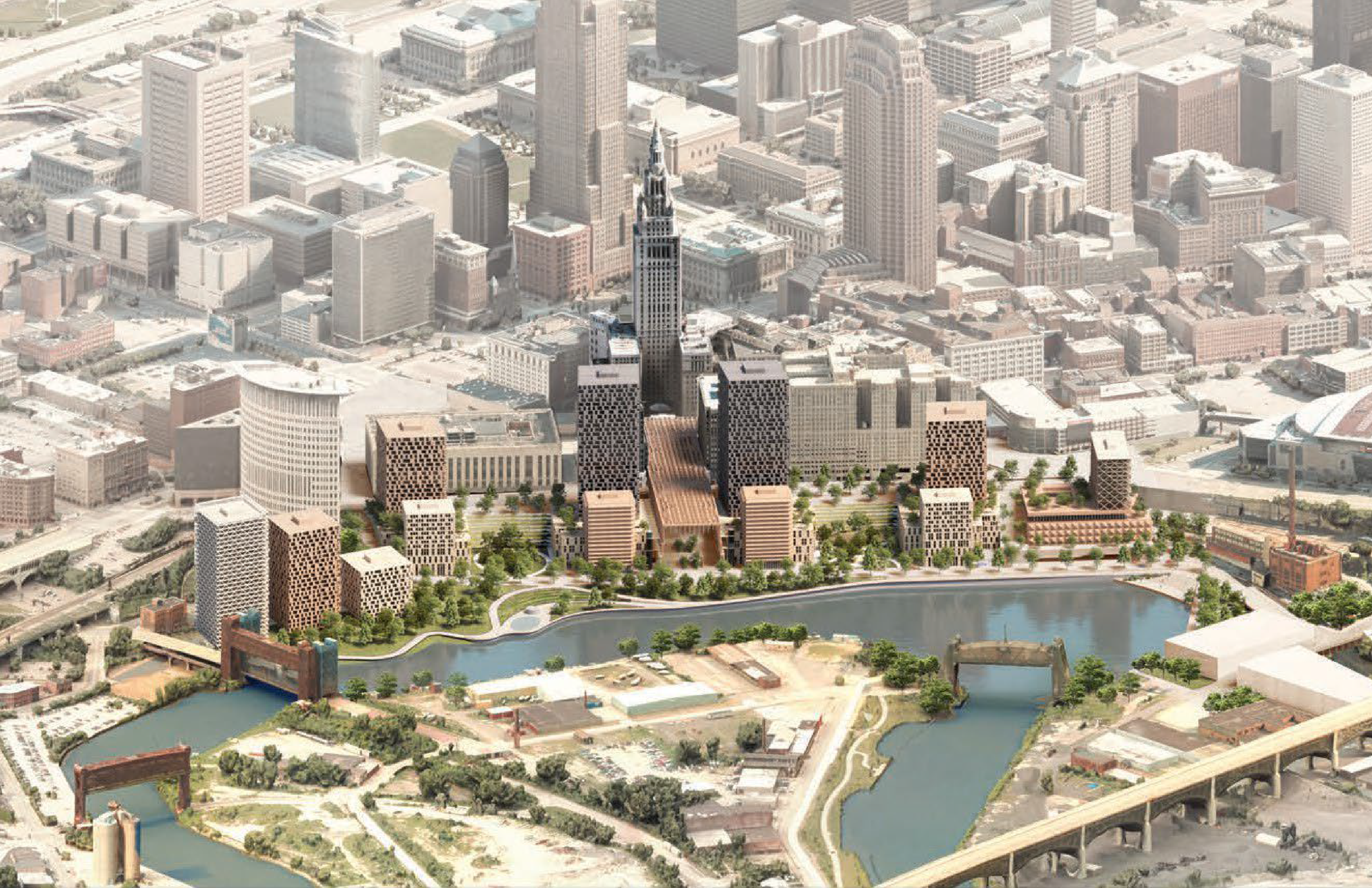
The Riverfront project is part of Cleveland’s Vision for the Valley, a multi-year comprehensive plan for the Riverfront adopted and refined by developer Bedrock, who is partnering with the City to implement public improvements in an innovative public-private partnership. The Cuyahoga Riverfront – which backs up to Tower City, a Bedrock property serving as Cleveland’s central light rail and transit hub—is currently inaccessible to pedestrians and cyclists from the city center.
Planned investments in the Cuyahoga Riverfront will create dynamic and accessible access to the Riverfront that will serve as an entertainment and leisure hub to people of all abilities. This catalytic transit-oriented development project will unlock economic development sites along the Cuyahoga River.
The development plan includes 12 acres of dedicated green space, enhanced multi-modal transportation opportunities, 2,000 new residential units, and 1.4 million square feet of new office, retail, and entertainment uses.
Working together, Bedrock and the City of Cleveland have prepared the Cuyahoga Riverfront Master Development Plan to transform 35 acres of inaccessible property along the shores of the Cuyahoga River and provide connectivity to Tower City Center and the downtown core. This once-in-a-lifetime opportunity to develop a unique and dynamic 35-acre transit-oriented neighborhood will weave 3.5 million square feet of new residential and mixed use development together with 12 acres of public parks along 3,000 linear feet of accessible boardwalk on the riverfront.
Core
The Shore-to-Core-to-Shore initiative’s success depends on high quality, safe, multimodal streets connecting Downtown to the Riverfront, Lakefront, and surrounding neighborhoods. Roadway improvements in the downtown core will not only embody the values of Cleveland’s Vision Zero safety commitment and Complete and Green Streets policy, but will also support ongoing economic development to generate revenues for the Shore-to-Core-to-Shore TIF District.
In partnership with a diverse group of Downtown stakeholders, the City is currently designing quick-build changes to a portion of Downtown’s roads, including the reconfiguration of two major streets to create a separated bikeway and additional sidewalk amenity space and pedestrianized plazas. The Downtown Core investment will accelerate this progress through capital improvements including roadway resurfacing, pedestrian safety improvements, streetscape enhancements including improved transit waiting areas, and the implementation of a separated bicycle network for riders of all ages and abilities.
Roadway investments in the core will be guided by ongoing public engagement and recommendations from Cleveland Moves – our 5-year citywide transportation plan, the Downtown Cleveland Transportation and Livability Study, the Public Square Public Realm Plan, and the Citywide Mobility Plan, and will build on millions of dollars of in-progress federal transportation investments on roads coming into Downtown.
Community Engagement Opportunity:
The City's Cleveland Moves initiative is a 5-year plan to improve biking, walking, and transit. The initiative will include a 3-year rapid bikeway network buildout, enhance safety for everyone no matter how they travel, and develop the look and feel of the Midway Bikeway Network. Residents can share input by using our interactive online map (closes September 1), finding us at community events, or scheduling a 15-minute virtual call with the project manager.
